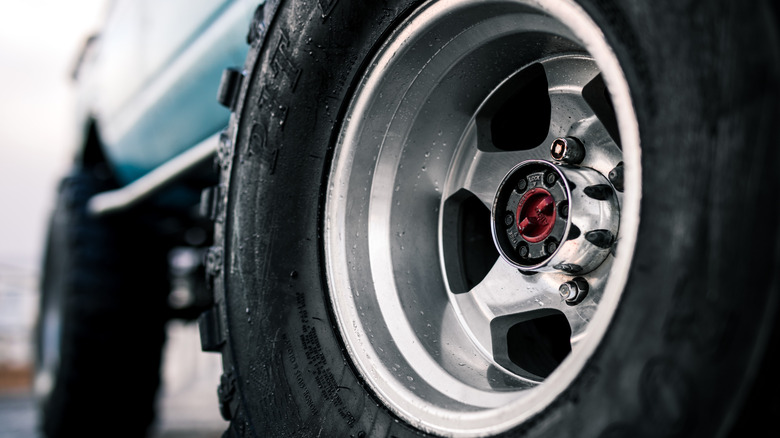How Do The Locking Hubs On 4x4 Wheels And Tires Work?
Locking hubs are a really important part of four-wheel drive systems: They're there to help drivers switch between two-wheel drive and 4WD.While many modern 4x4s now use automatic systems, the underlying principles of how hubs work haven't changed much. They let the front wheels spin freely until it's time to lock them into the drivetrain, which is different from the powertrain.
There are two main types of locking hubs: manual and automatic. Manual locking hubs require the driver to exit their car and physically rotate a dial on each front hub to lock or unlock the front wheels from the axle shaft. When locked, the collar inside the hub slides in, coupling the axle shaft to the hub for 4WD. When unlocked, the front wheels disconnect from the drivetrain and are able to spin freely.
This manual design is popular with serious off-roaders, because it's inherently more reliable than an electronic or vacuum system. Of course, the downside is that you have to remember to lock them before heading off-road, and also unlock them before returning to the pavement.
Tips to keep your locking hubs working properly
Automatic locking hubs engage the front wheels totally on their own without needing the driver to get out and do anything. They do it with an internal clutch mechanism, essentially a one-way clutch that slides into place when the driveshaft applies torque. The moment you shift into 4WD, the hub locks those front wheels automatically.
When 4WD is disengaged, the clutch slides back out and lets the front wheels spin independently again. Some newer cars can lock electronically, while older ones might still require you to reverse slightly after switching out of 4WD to fully disengage the hubs.
No matter if you're working with manual or automatic locking hubs, it's important to unlock whenever possible. That way, you can reduce the amount of friction and improve your fuel economy in one move. There's also less wear and tear on the tires, which is good if the tires are new, as they should last for a while. The front end components will also wear less. Likewise, it's important to periodically lock the hubs, even when 4WD isn't needed, to make sure the critical parts of the axle shafts and differential stay lubricated.
How to spot an issue with your locking hubs
One of the most common issues with locking hubs is also the most obvious: Failure to properly engage or disengage. Mud, corrosion, and worn internal parts can all prevent the sliding mechanism from locking into place, or from releasing once it's no longer needed. This can keep power going to the front wheels, even when 4WD is engaged. It can also cause drivetrain drag if the hub is stuck locked in 2WD mode.
Some tell-tale signs are also some of the worst sounds your car can make, including loud grinding noises when engaging or disengaging, burning through fuel faster than you usually would, and the tire wear and tear we mentioned above. One or more of these, and you can assume something might be up with your locking hubs. Keep them clean, lubricated, and inspected regularly – every couple of years or every 25,000 miles,whichever comes first — and you'll avoid the frustrating surprise of a stuck vehicle with no front-wheel traction.


